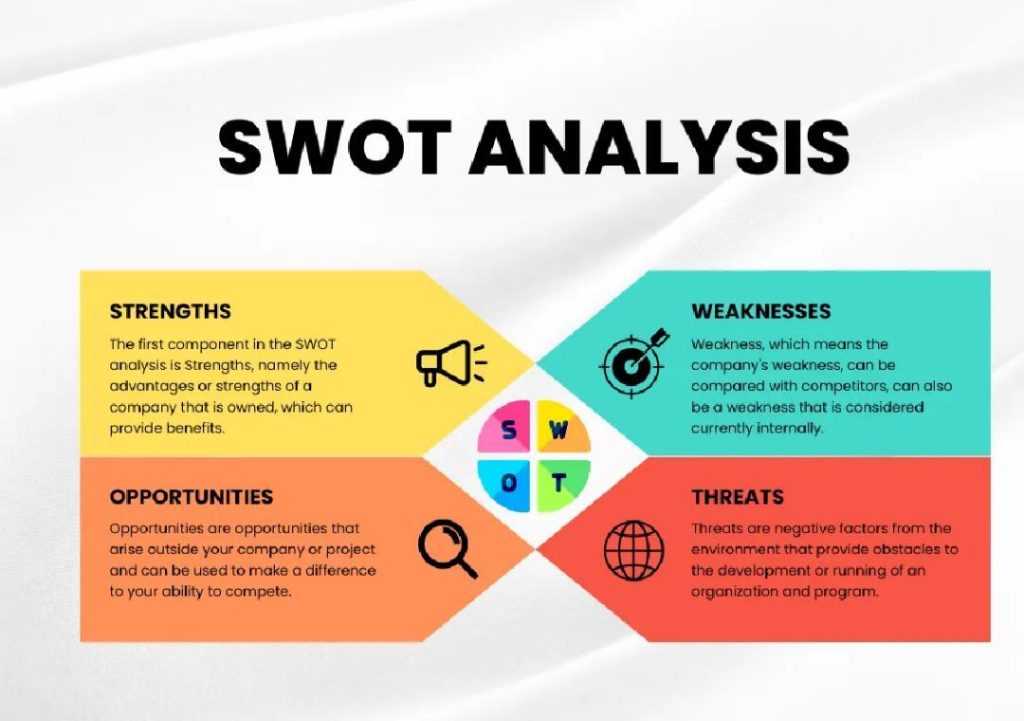
What Tools Help Pinpoint Performance Gaps Fast?
Identifying performance gaps is a crucial step in addressing business underperformance. To fix these gaps, it’s essential to analyze the company, department, and project levels to pinpoint misalignment. In this blog post, we’ll explore various tools and approaches to help you do just that.
KPI Analysis
Start by identifying Key Performance Indicators (KPIs) for your company, department, and projects. KPIs are measurable values that demonstrate how effectively an organization is achieving its objectives. By analyzing KPIs, you can identify areas where your organization is falling short and prioritize improvement efforts.
SWOT Analysis
Conduct a comprehensive SWOT analysis to gain situational clarity. SWOT stands for Strengths, Weaknesses, Opportunities, and Threats. This framework helps you identify internal strengths and weaknesses as well as external opportunities and threats that can impact your organization’s performance.
Root Cause Analysis
Once you’ve identified the performance gaps, conduct root cause analysis to define the challenge. Root cause analysis is a methodology that helps you identify the underlying causes of a problem, rather than just its symptoms. This involves asking questions like “What led to this performance gap?” or “What are the underlying factors contributing to this issue?”
Culture and Process Gaps
Map the causes of the performance gap across both culture and process gaps. This will help you identify any cultural or behavioral issues that may be hindering performance, as well as process-related problems.
Action Plans
Build action plans to address the identified gaps and challenges. These plans should be specific, measurable, achievable, relevant, and time-bound (SMART). They should also be communicated to all relevant stakeholders and monitored regularly.
Benchmarking
Finally, benchmark your organization’s performance against peer organizations to set realistic improvement targets. Benchmarking involves comparing your organization’s performance to that of similarly situated organizations. This can help you identify best practices and areas for improvement.
Diagnostic Tools
So, which diagnostic tools can help you pinpoint performance gaps fast? Here are some of the top diagnostic tools for performance gaps:
- Performance Gap Analysis Template: This template helps you identify the gaps between your organization’s current performance and its desired performance. It provides a structured approach to analyzing performance gaps and building action plans.
- SWOT Analysis Template: This template helps you conduct a comprehensive SWOT analysis, identifying internal strengths and weaknesses as well as external opportunities and threats.
- Root Cause Analysis Template: This template helps you conduct root cause analysis, identifying the underlying causes of a problem and building action plans to address them.
- Balanced Scorecard: This framework helps you measure and manage an organization’s performance from four different perspectives: financial, customer, internal processes, and learning and growth.
- Six Sigma DMAIC: This methodology helps you identify and address performance gaps by following a structured approach to problem-solving: Define, Measure, Analyze, Improve, and Control.
- Value Stream Mapping: This tool helps you visualize your organization’s workflow and identify areas where performance can be improved by eliminating waste and maximizing value.
- Benchmarking Templates: These templates help you compare your organization’s performance to that of peer organizations, identifying best practices and areas for improvement.
In conclusion, pinpointing performance gaps is a crucial step in addressing business underperformance. By using KPI analysis, SWOT analysis, root cause analysis, culture and process gaps mapping, action plans, and benchmarking, you can identify areas where your organization is falling short and prioritize improvement efforts. Additionally, by leveraging diagnostic tools such as performance gap analysis templates, SWOT analysis templates, root cause analysis templates, and benchmarking templates, you can build action plans and track progress towards improvement.
Source:
https://www.growthjockey.com/blogs/top-diagnostic-tools-for-performance-gaps






